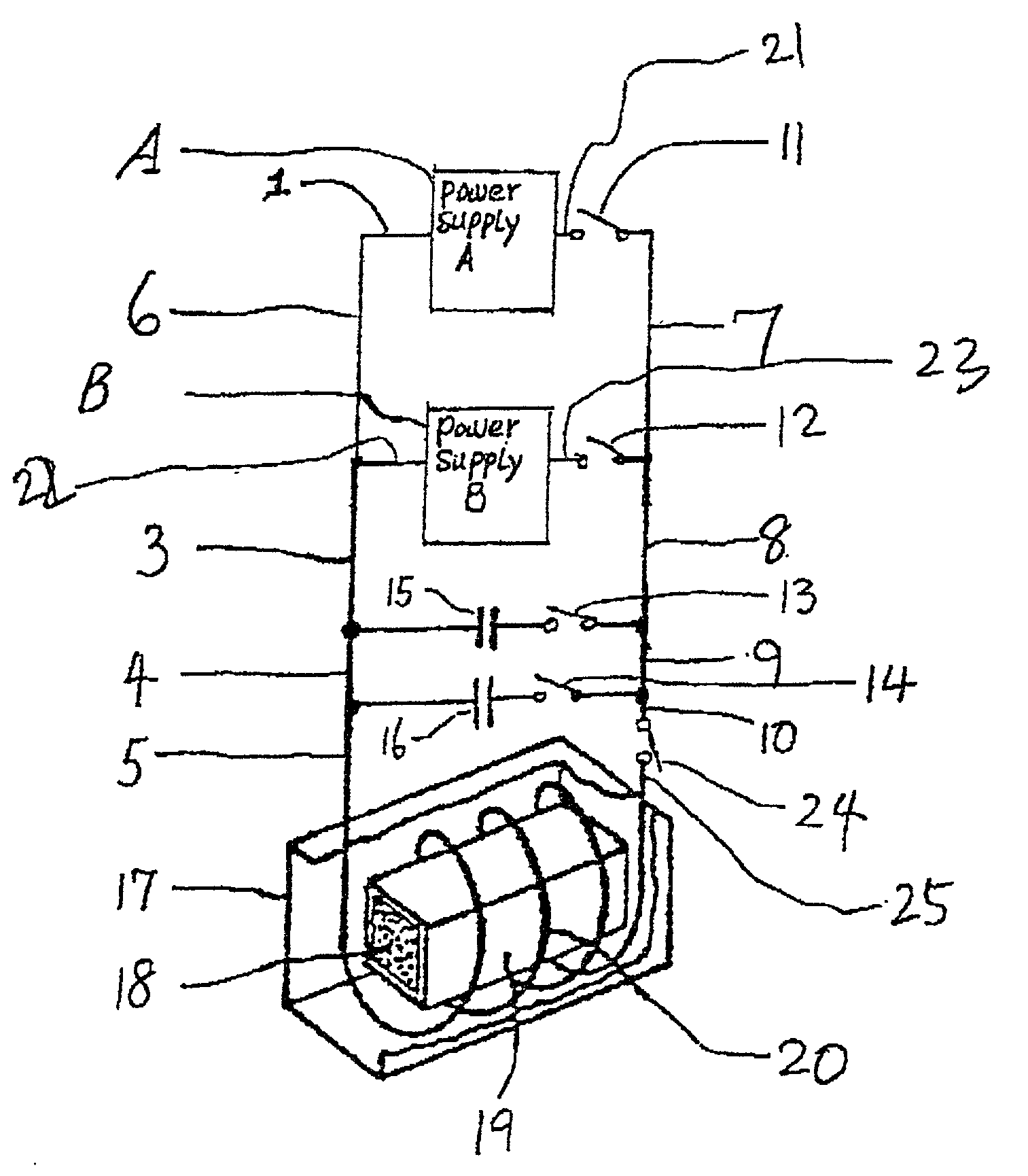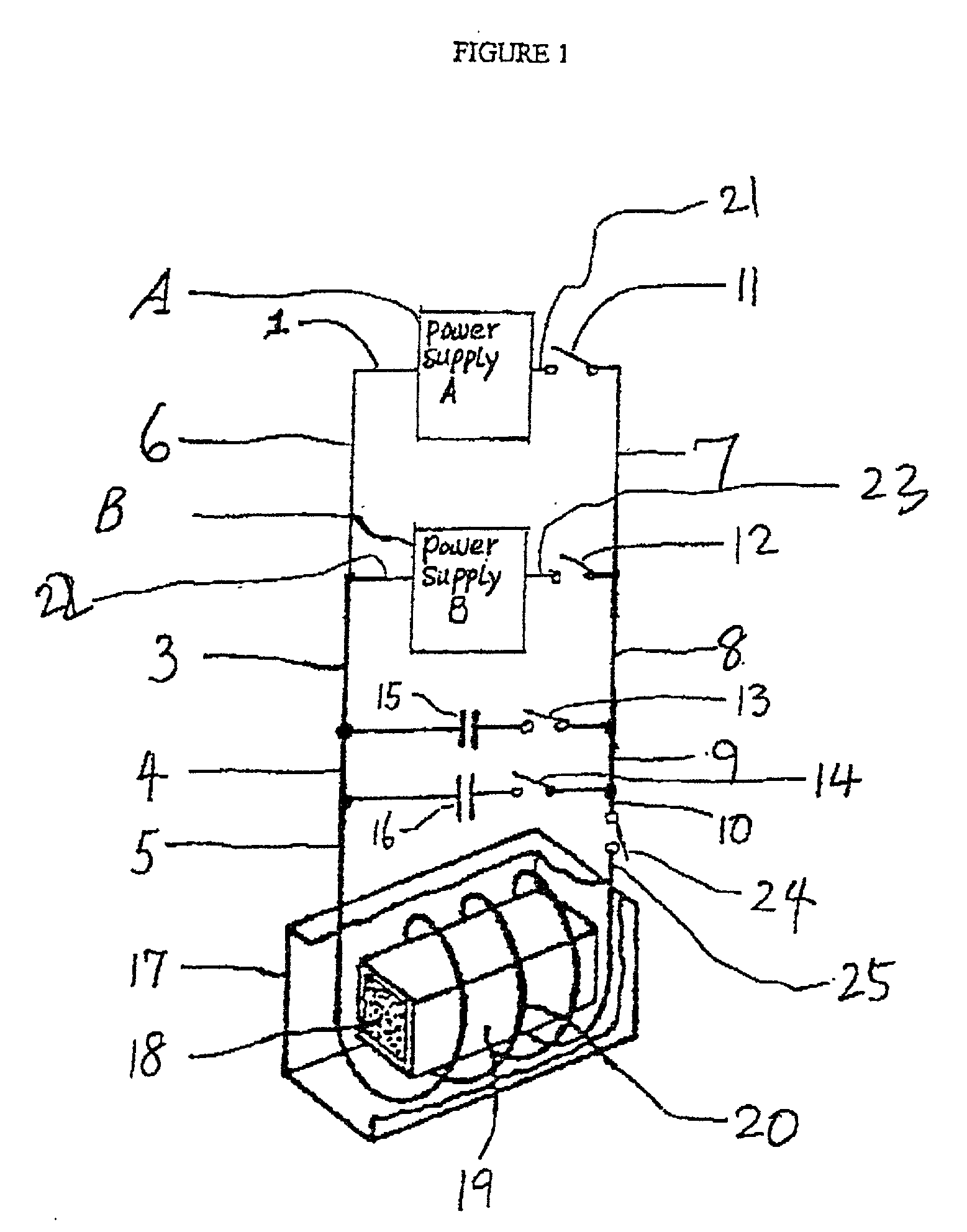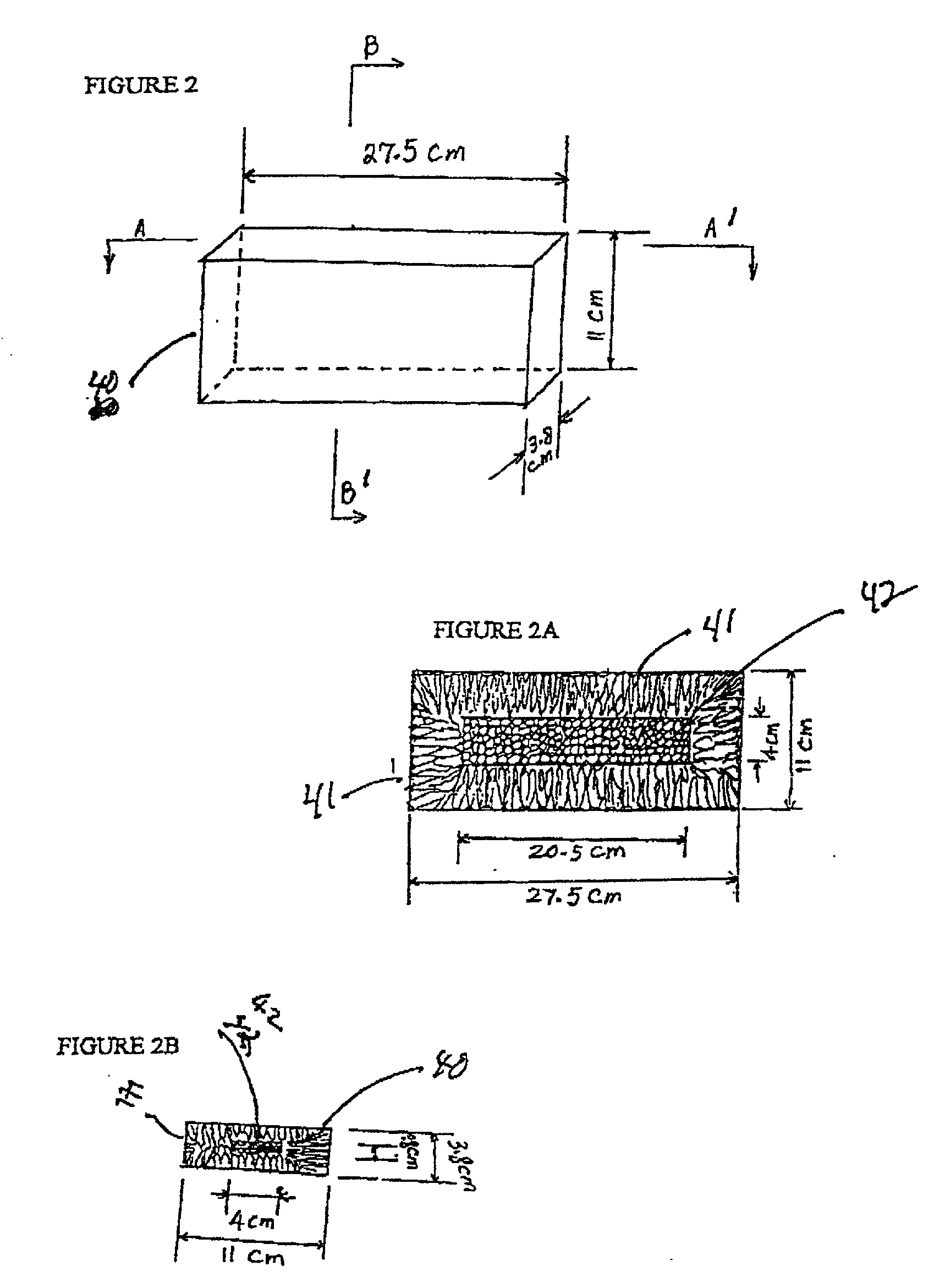Density enhanced, DMC, bonded permanent magnets
a technology of bonded permanent magnets and enhanced density, which is applied in the field of density enhanced, dmc, bonded permanent magnets, can solve the problems of inability to produce conventional manufacturing methods, change in composition properties, and increase in molecular weight of resin components, so as to achieve the effect of increasing the density of bonded permanent magnets and reducing the size of compressed particles
- Summary
- Abstract
- Description
- Claims
- Application Information
AI Technical Summary
Benefits of technology
Problems solved by technology
Method used
Image
Examples
example
[0190] Example M10
[0191] The bonded magnet described in Table IV above as M10 is produced as follows; the raw materials are mixed according to the formula:
(Co.sub.0.625Fe.sub.0.28Cu0.07Zr.sub.0.025).sub.8.4
[0192] described as Example A in Table 1, and then melted in an induction-melting furnace. The melted liquid alloy is then poured into a Cu mold at a predetermined speed to produce an ingot with dimensions detailed in FIG. 2. About 90% volume percent of the desirable columnar grains within the ingot is obtained by adjusting the liquid alloy temperature, the speed of pouring liquid alloy into the Cu mold, the cooling rate of the ingot, etc. The ingot is solution-treated at 1140.degree. to 1200.degree. C. for 2 to 10 hours, and then heat-treated at 750.degree. to 850.degree. C. for 5 to 20 hours followed by slow cooling to 400.degree. C. at a rate of 1 to 1.5.degree. C. / min. Above ingot is then crushed under the protection of argon atmosphere, followed by milling to get the desired ...
PUM
| Property | Measurement | Unit |
|---|---|---|
| Temperature | aaaaa | aaaaa |
| Fraction | aaaaa | aaaaa |
| Fraction | aaaaa | aaaaa |
Abstract
Description
Claims
Application Information
 Login to View More
Login to View More - R&D
- Intellectual Property
- Life Sciences
- Materials
- Tech Scout
- Unparalleled Data Quality
- Higher Quality Content
- 60% Fewer Hallucinations
Browse by: Latest US Patents, China's latest patents, Technical Efficacy Thesaurus, Application Domain, Technology Topic, Popular Technical Reports.
© 2025 PatSnap. All rights reserved.Legal|Privacy policy|Modern Slavery Act Transparency Statement|Sitemap|About US| Contact US: help@patsnap.com



